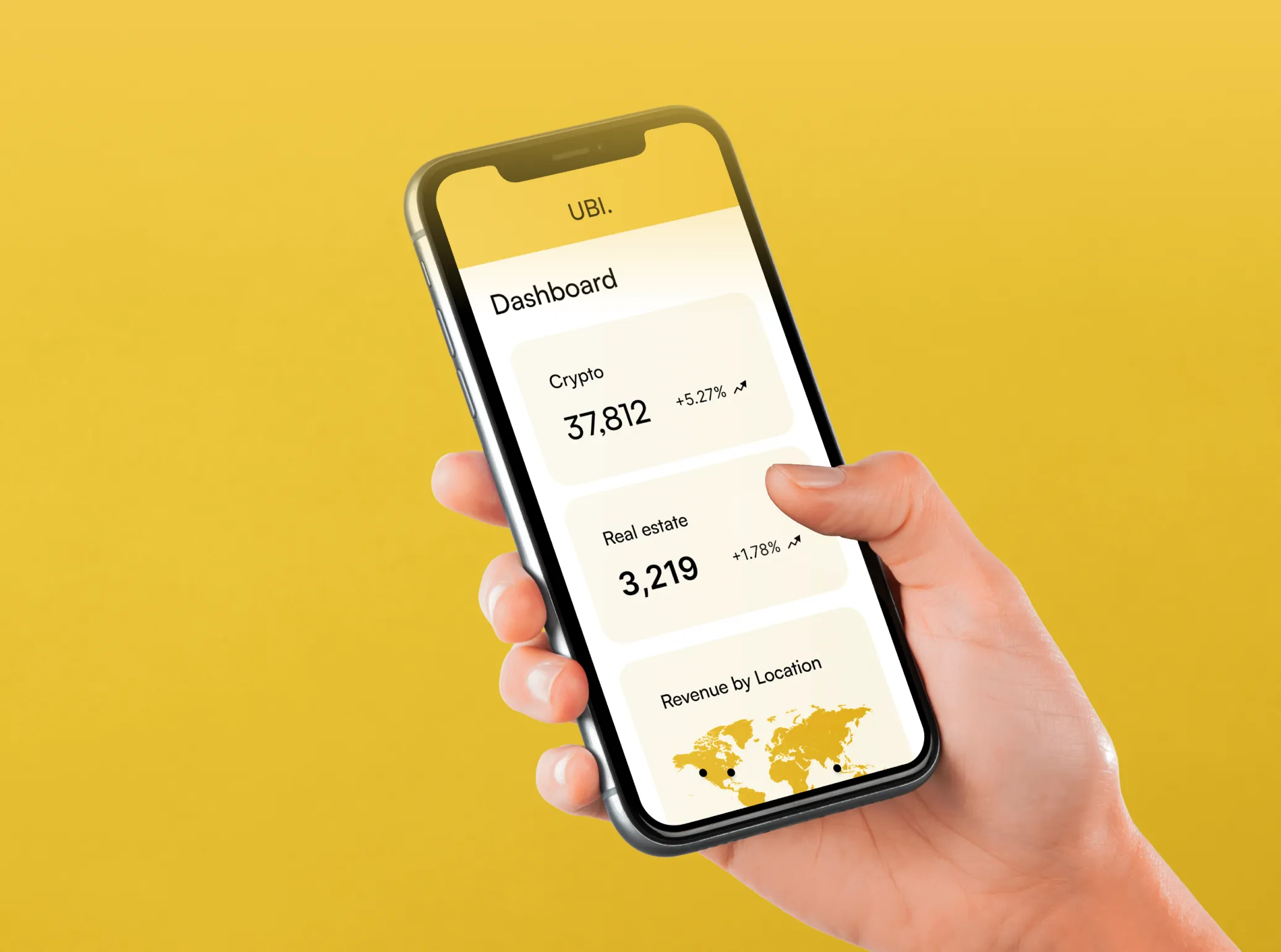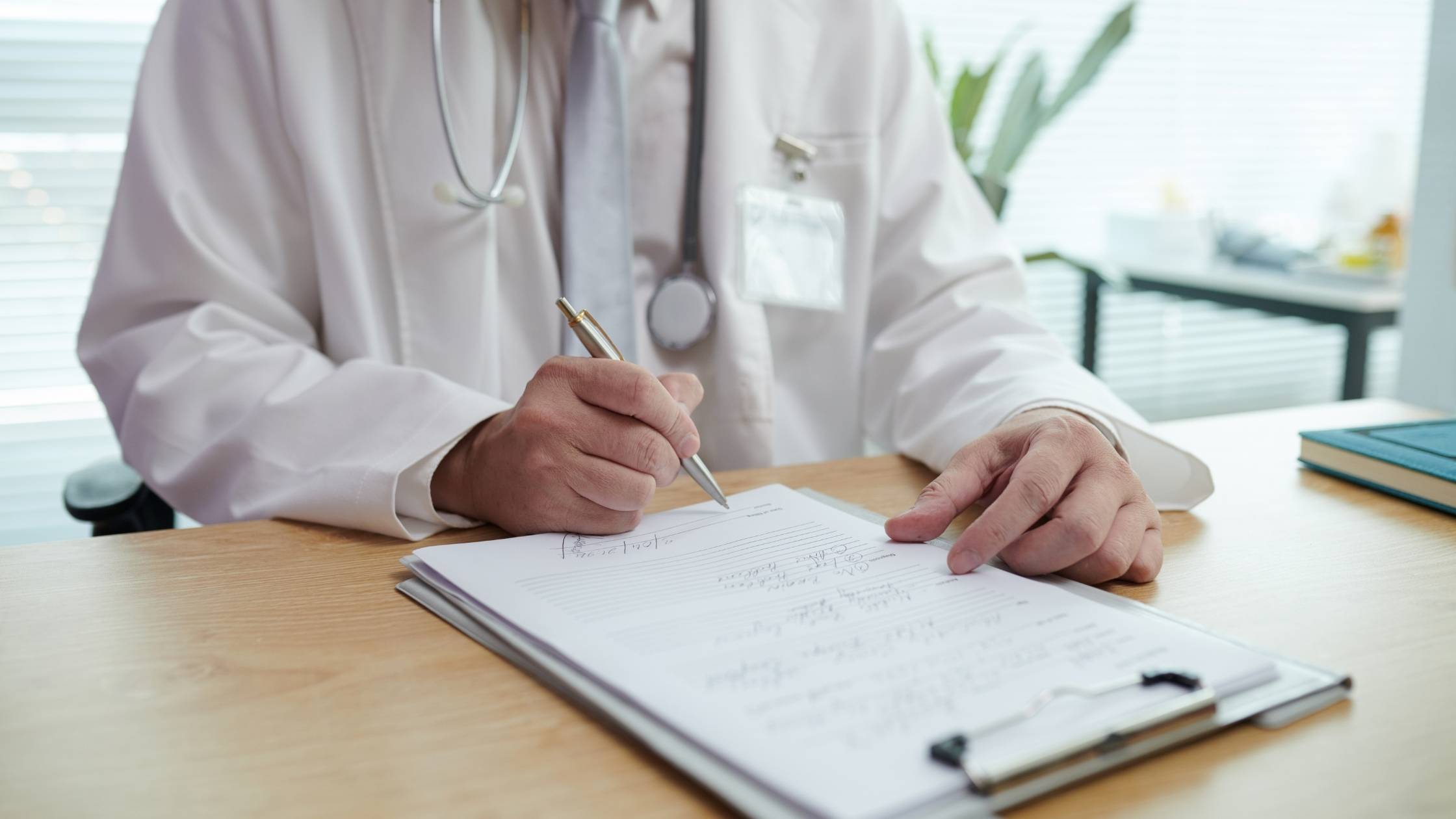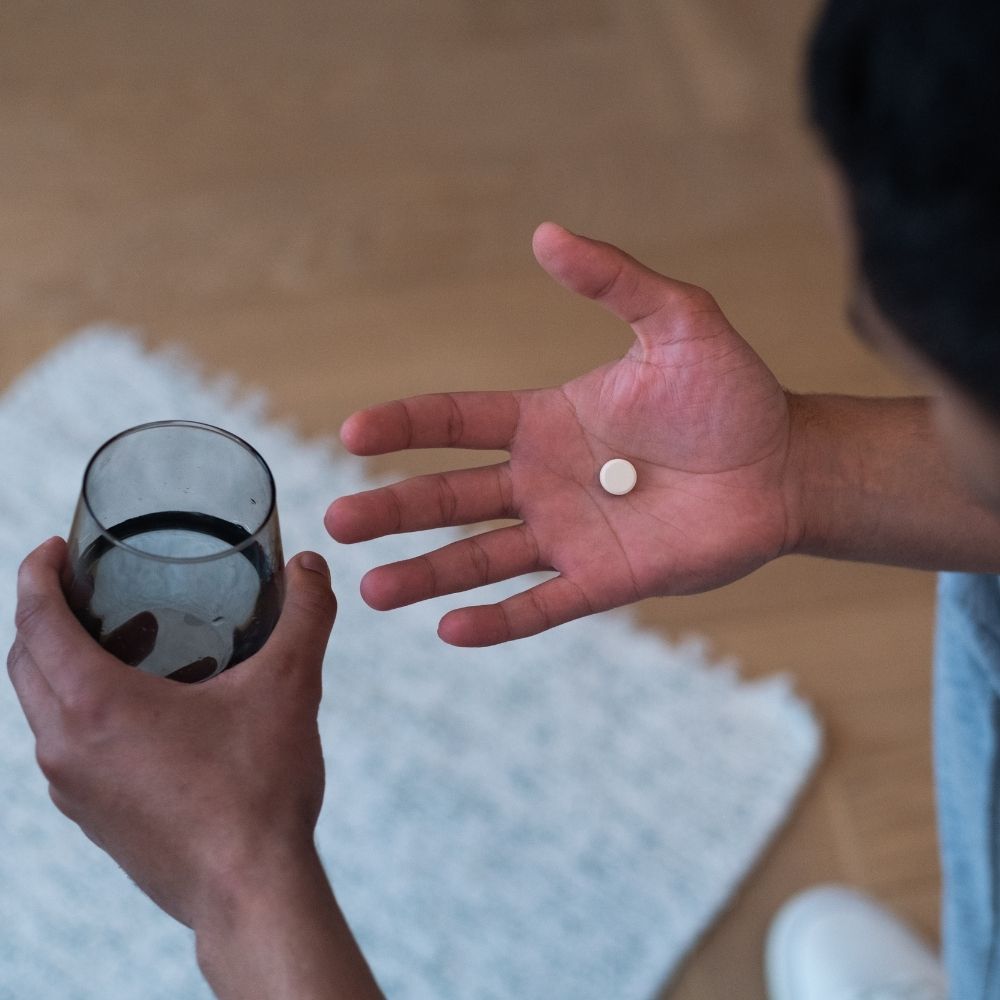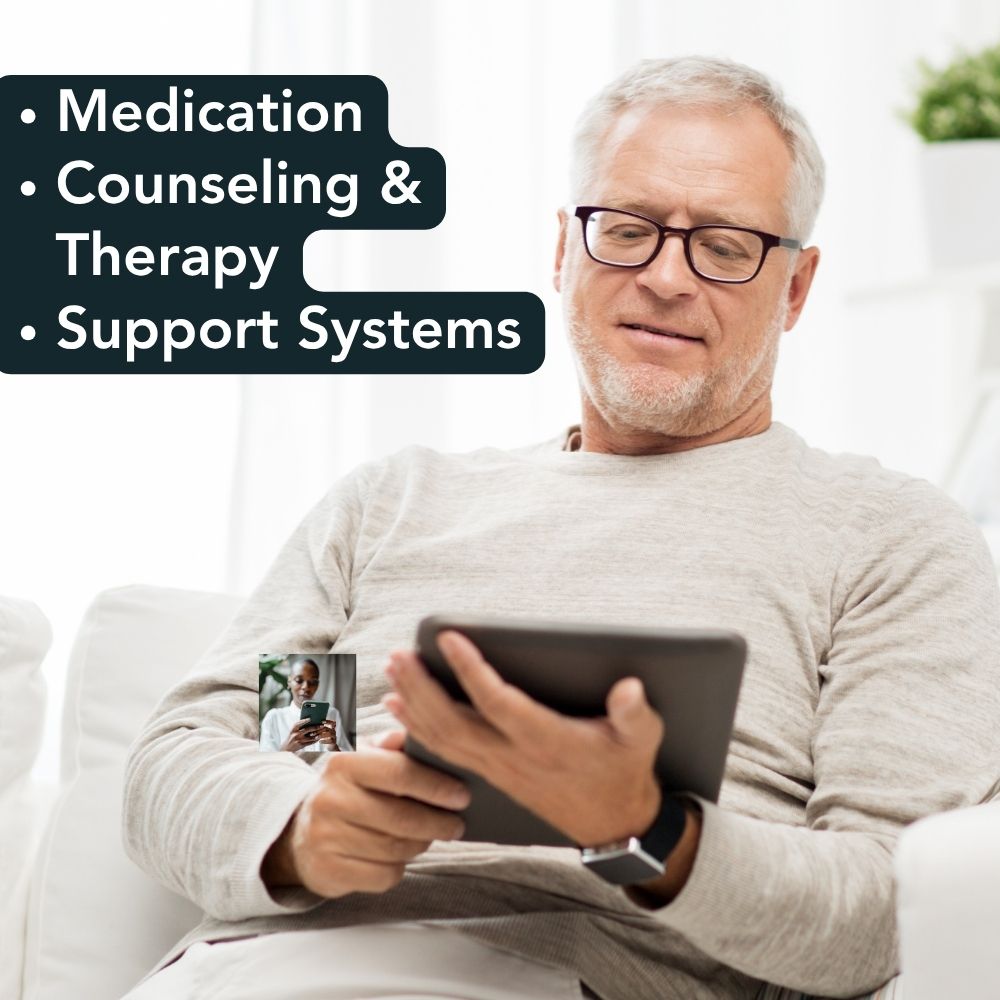Naltrexone for Alcohol Use Disorder: A Guide
1. Introduction: How Naltrexone Helps with Alcohol Use Disorder (AUD)
Naltrexone is an important medication used to treat Alcohol Use Disorder (AUD). It's a prescription drug that works by blocking certain effects in your brain.1 Unlike some other addiction medications, naltrexone is not addictive itself, and it won't cause withdrawal symptoms if you stop taking it, as long as you're not physically dependent on opioids or alcohol.1 This is a big plus because it means you don't have to worry about becoming dependent on the treatment medication. This helps people feel more comfortable taking it and stick with their treatment plan.
The U.S. Food and Drug Administration (FDA) has approved naltrexone for treating AUD.1 Its main job is to help people drink less alcohol, prevent them from going back to heavy drinking, and support their journey to lasting recovery.1 Naltrexone is also approved by the FDA to treat Opioid Use Disorder (OUD).1
It's important to know that naltrexone isn't a magic bullet or a standalone cure for addiction.5 It works best when it's part of a complete treatment plan. This usually includes taking the medication along with counseling, attending support group meetings (like Alcoholics Anonymous or SMART Recovery), and other personalized therapies recommended by a healthcare provider.1 This all-around approach shows that getting better from AUD involves more than just medicine.
2. How Naltrexone Works: The Science Behind Reducing Cravings
Naltrexone helps with AUD by affecting your brain's natural reward system. It works by blocking certain spots in your brain called opioid receptors.1 This is key because it targets your body's natural opioid system.
When you drink alcohol, your brain releases natural chemicals called endorphins.1 These endorphins travel through your body and attach to those opioid receptors, making the good feelings or "buzz" you get from alcohol stronger.1 Naltrexone steps in by occupying these same opioid receptors. By doing so, it stops the endorphins from attaching, which lessens or takes away the pleasurable and rewarding effects you link with drinking alcohol.1 When you're not drinking alcohol or using opioids, naltrexone itself has little to no direct effect.1
This action leads to a big change in drinking habits and cravings. By breaking the brain's link between alcohol and pleasure, naltrexone helps you drink less overall. Over time, this helps reduce how strong and how often your alcohol cravings are.1 It's important to know that this is different from other AUD medications like disulfiram (Antabuse). Disulfiram makes you feel very sick if you drink alcohol, but naltrexone doesn't make you sick or ill if you drink.3 This difference is important for people to understand and for them to stick with the treatment. People might be hesitant to take a medicine that causes severe physical discomfort if they drink. Naltrexone's approach, which removes the reward of drinking instead of causing punishment, can lead to more people accepting the treatment and staying with it longer, as it avoids the immediate, unpleasant consequences linked to disulfiram. This subtle but powerful difference in how the medication influences behavior can greatly impact a person's willingness to continue therapy long-term.
This short video succinctly explains the science behind Naltrexone:
3. Who Can Benefit from Naltrexone? Patient Selection and What It's Used For
Naltrexone is a valuable treatment option for certain people dealing with Alcohol Use Disorder (AUD). It's specifically for people diagnosed with alcohol dependence or AUD.1 The best candidates are usually those who have already stopped drinking alcohol or can stop drinking before starting the medication and stay sober while getting outpatient treatment. People with moderate to severe AUD, especially if they have physical dependence or keep having strong cravings and relapses even with counseling alone, are considered good candidates for medication-assisted treatment with naltrexone.17 Things that lead to better results in studies include the person's willingness to take the medication as prescribed, good management of any other health conditions, involvement in community support groups, and consistently taking the medication.19
Naltrexone comes in two main forms: a pill you take by mouth and a long-acting shot you get once a month, known by the brand name Vivitrol.1 The pill form is usually prescribed as 50 milligrams (mg) once a day.5 To help with possible stomach upset like nausea, you can take the oral naltrexone pill with or after meals.1 Some doctors also suggest taking naltrexone "as needed," which means taking it about an hour before you expect to drink heavily or have strong cravings.2 This approach has been shown to help reduce alcohol intake, though it doesn't always lead to complete sobriety.11
The injectable form, Vivitrol, is given as a 380 mg shot into a muscle every four weeks or once a month.9 A healthcare professional must give this shot into your buttock muscle, switching sides for each new injection.9 Special needles come with Vivitrol, and the person giving the shot will choose the right needle size (1.5 or 2 inches) based on your body to make sure the medicine goes into the muscle correctly.7 While the oral pill is generally considered more suitable for AUD than OUD, the shot might be a good option for both.2 The long-lasting effect of the injectable naltrexone can be especially helpful if you find it hard to remember to take a pill every day, which is a common challenge in staying in recovery.1
A very important step before starting naltrexone is making sure you are completely free of opioids. It's crucial that you haven't used any opioids—including prescription pain medications, cough/cold medicines with opioids, and street opioids—for at least 7 to 10 days. For some longer-acting opioids like buprenorphine or methadone, it might be up to 14 days before you start naltrexone. Taking naltrexone when opioids are still in your system can cause severe and dangerous opioid withdrawal symptoms, which might even require a hospital stay. To confirm you're opioid-free, a special test (called a Narcan challenge) might be done if there's any doubt about hidden opioid use, and a urine test for opioids is also recommended.19 Also, you shouldn't be showing any signs or symptoms of opioid withdrawal when you start naltrexone.
How well naltrexone works doesn't just depend on the medicine itself, but also on how ready you are for treatment and how carefully your doctor manages your care before you start. The need to be opioid-free can be a big challenge, especially for people who also use opioids or take them for chronic pain. This means you'll need careful checking before you start, and sometimes a supervised detox period to make sure you're safe. The choice between the pill and the shot also depends on whether you think you'll remember to take it every day and your lifestyle. This shows how complex treating AUD can be, especially for people who use more than one substance. It highlights that successful naltrexone treatment needs not just the medicine, but a thorough check-up beforehand, clear information for you, and possibly a structured detox environment to get the best and safest results.
4. Effectiveness and Benefits: What the Research Shows
Research consistently shows that naltrexone helps change drinking habits and supports recovery from Alcohol Use Disorder (AUD). In various studies, naltrexone treatment has been shown to help people stop drinking, prevent going back to heavy drinking, and effectively drink less overall.1 For example, a review of six studies found that oral naltrexone helped people drink less alcohol and made them more likely to stop drinking completely compared to a placebo (a pill with no medicine in it).2 For the injectable form, Vivitrol, one study reported a 25% reduction in heavy drinking days compared to a placebo.2 Across several studies, people who received injectable naltrexone had, on average, 2 fewer drinking days and 1.2 fewer heavy drinking days per month compared to those who received a placebo.15 Overall, while study results can vary, the general trend supports naltrexone's effectiveness in reducing the total amount of alcohol consumed and how often people drink.2
While naltrexone is good at reducing cravings and heavy drinking, its effect on achieving and staying completely sober is not always the same in every study.11 Some analyses have shown no big difference in how often people started drinking again or had heavy drinking days between those taking naltrexone and those taking a placebo.15 However, for people who are already sober, naltrexone can be a helpful tool to help them stay that way.3 This suggests that naltrexone's usefulness goes beyond just aiming for complete sobriety. Its consistent effect on reducing the
amount and frequency of heavy drinking means it can be a valuable tool to reduce harm. For people who might struggle with complete sobriety, naltrexone can still greatly lessen the negative health and social problems linked to AUD by reducing how much they drink. This wider view changes how we see naltrexone's role, making it more accessible and relevant to more people with AUD, including those who might not initially commit to full sobriety. It highlights the importance of setting goals tailored to you, recognizing that any reduction in harmful drinking is a positive step. This understanding also supports the practice of taking naltrexone "as needed" or "targeted" dosing 2, which fits well with a harm reduction strategy.
Naltrexone works even better when combined with other support like counseling. Studies show that naltrexone gets better results when used with therapies such as counseling or participation in mutual support groups like Alcoholics Anonymous (AA) or SMART Recovery.6 Specifically, injectable naltrexone treatment, when combined with counseling, looks very promising for treating AUD.1
Naltrexone is one of three medications currently approved by the FDA for AUD treatment, along with acamprosate and disulfiram.2 Each medication works in a different way. A review comparing acamprosate and naltrexone suggested that acamprosate might be a bit better at helping people with AUD stay completely sober, while naltrexone seemed a little better at reducing heavy drinking and cravings.1 Disulfiram, unlike naltrexone, works by causing unpleasant physical symptoms when alcohol is consumed, acting as a deterrent.2 This different way of working gives healthcare providers a range of medication options to match treatment to what each person needs and prefers.
5. Important Precautions and Potential Side Effects
While naltrexone is a valuable tool in AUD treatment, it's important for you and your doctor to know about its possible side effects and what to watch out for. Side effects are usually mild and get better over time as your body gets used to the medicine.6
Common Side Effects of Naltrexone
The most common side effects reported include nausea (about 1 in 10 people), headache (7%), dizziness (4%), nervousness (4%), fatigue (4%), and trouble sleeping (3%).3 Other common, though less frequent, effects can include vomiting, loss of appetite, joint pain, muscle cramps, anxiety, stomach pain or cramps, dry mouth, indigestion, and symptoms like a common cold. To help with these early side effects, especially nausea, doctors might suggest starting with a lower oral dose, like 25 mg for the first few days, before slowly increasing to the standard 50 mg daily dose.6 Taking oral naltrexone pills with or after a meal can also help reduce stomach discomfort.1 If you experience vivid dreams, taking the medication in the morning might help.7
Serious Side Effects and When to Seek Medical Attention

Even though naltrexone is generally safe, it can have more serious side effects that need immediate medical attention. The many possible serious effects, especially concerning interactions with opioids and the fact that it doesn't stop alcohol impairment, mean that just getting a prescription isn't enough for safe and effective treatment. You need to be well-informed, regularly checked by your doctor, and have a strong support system involving family and friends to stay safe.
Seek immediate medical attention if any serious symptoms occur.
- Liver Problems (Hepatotoxicity)
- Naltrexone can cause liver damage or hepatitis, especially if you take too much (above 50 mg per day). It should not be used if you have severe liver problems or liver failure , and its use in people with active liver disease needs very careful thought.
- Watch out for signs like persistent stomach pain (upper right side) lasting more than a few days, dark urine, yellowing of your skin or eyes (jaundice), unusual bleeding or bruising, unexplained tiredness, loss of appetite, and light-colored stools.
- Regular blood tests to check your liver function are often recommended.17
- Naltrexone can cause liver damage or hepatitis, especially if you take too much (above 50 mg per day). It should not be used if you have severe liver problems or liver failure , and its use in people with active liver disease needs very careful thought.
- Depression and Suicidal Thoughts
- Naltrexone can make you feel restless, easily annoyed, or act differently, and might make existing depression worse or lead to thoughts of harming yourself.
- You, your family, and close friends must be told about these risks and should report any sudden or strong changes in how you feel, including nervousness, anger, restlessness, violence, or fear, as well as any big changes in your mood or behavior.
- Psychotic Symptoms
- In rare cases, naltrexone has been linked to symptoms like hearing or seeing things that aren't there, or feeling like people are out to get you.
- These symptoms usually go away when you stop the medicine.10 While we don't fully understand why this happens, it might involve a change in a brain chemical called dopamine.10
- Injection Site Reactions (for Vivitrol)
- For people getting the injectable form (Vivitrol), serious reactions can happen where the shot was given, including skin damage (necrosis) that might sometimes need surgery.
- What to look for: intense pain, hardness, significant swelling, lumps, blisters, an open wound, or a dark scab at the injection site. Any of these symptoms need immediate medical attention.
- Allergic Reactions
- You should be aware of the signs of an allergic reaction, such as hives, difficulty breathing, or swelling of your face, lips, tongue, or throat.
- These symptoms require emergency medical help.
- Risk of Opioid Overdose if Attempting to Overcome Naltrexone's Effects
- A critical safety warning: you should never try to "beat" naltrexone's blocking effects by taking larger doses of opioids, as this can lead to severe injury, coma, or death.
- Also, after naltrexone treatment is stopped, or if you miss a dose, your body's sensitivity to opioids can greatly increase. This means that even a small amount of opioids you used to handle could cause a life-threatening overdose.
- It's strongly recommended that you carry an ID card stating you are taking naltrexone to alert emergency medical personnel.5
- Naltrexone Does Not Prevent Alcohol Impairment
- Even though naltrexone can block the good "buzz" you get from alcohol, it does not stop alcohol from affecting your body or your thinking. This includes less coordination, slower reactions, and poor judgment.
- Therefore, you should not use naltrexone to try to drive or do other things while drinking, because the risks of impairment remain unchanged.
6. Dosage and Administration: Pills You Take vs. Vivitrol Shot
Naltrexone comes in pills you take by mouth and shots, giving you flexibility to customize treatment to your needs and preferences. This adaptability is very important in addiction treatment, where sticking to your treatment can really help you succeed.
Typical Dosing Schedules for Oral Naltrexone
For treating Alcohol Use Disorder (AUD), the usual adult dose of oral naltrexone is 50 milligrams (mg) taken once a day.5 To make it easier to handle and reduce early side effects, some doctors might suggest starting with a lower dose of 25 mg for the first 3 to 4 days, then slowly increasing to the full 50 mg daily dose.6 Oral naltrexone is usually taken once a day, often in the morning, and can be taken with or right after a meal to help with possible stomach upset like nausea or stomach pain.1
Beyond daily dosing, some people might use naltrexone "as needed," which is sometimes called "targeted naltrexone" dosing. This means taking the medication about an hour before situations where you expect to drink heavily or have strong cravings.2 This flexible approach can be good for people who want to manage their medicine around specific risky situations, potentially helping them stay in treatment longer and making it work better.
Vivitrol (Injectable) Dosage and Administration Details
The long-acting shot, Vivitrol, is given as a 380 mg injection into a muscle every 4 weeks, or once a month.9 This form is designed to release the medicine steadily over a month, which can help with the challenge of remembering to take a pill every day.1
A trained healthcare professional must give the Vivitrol shot into your buttock muscle, switching sides for each new injection.9 The medication package includes special needles (1.5 or 2 inches long), and the healthcare professional will carefully choose the right needle size based on your body to make sure the medicine goes into the muscle correctly.7 You don't have to take the oral naltrexone pill first before starting Vivitrol.13
Naltrexone Dosage and Administration (Oral vs. Injectable)
- Oral Tablet:
- Typical Dose (AUD): 50 mg once daily.5
- How it's Given: By mouth (tablet).16
- Who Gives It: You take it yourself.16
- How Often: Once daily.16
- Key Things to Know:
- Can start at 25 mg to reduce side effects.6
- Can be taken with or after food to lessen stomach upset.1
- Taking it "as needed" is possible for some people.2
- Can start at 25 mg to reduce side effects.6
- Extended-Release Injection (Vivitrol):
- Typical Dose (AUD): 380 mg every 4 weeks or once a month.9
- How it's Given: Shot into the buttock muscle (intramuscular or IM).9
- Who Gives It: A healthcare professional.9
- How Often: Once monthly.9
- Key Things to Know:
- Requires a professional to give the shot.9
- Special needle lengths (1.5 or 2 inches) are provided and chosen based on your body to make sure the shot goes into the muscle correctly.7
- You don't have to take the oral naltrexone pill first.13
Considerations for Missed Doses
Sticking to your prescribed dosing schedule is important for keeping the right amount of naltrexone in your body. If you forget to take an oral naltrexone dose, take it as soon as you remember. But if it's already the next day, skip the missed dose and go back to your usual schedule; don't take a double dose.14 If you miss a Vivitrol shot, it's crucial to call your doctor right away to reschedule. Keeping a consistent injection schedule helps ensure a steady amount of naltrexone in your system, which is especially important for reducing the risk of opioid overdose if you were to use opioids again.14
Duration of Treatment
How long you take naltrexone for AUD is different for everyone. While it's generally suggested to take naltrexone for at least three months or longer 6, the exact length of time depends on several things, including how serious your AUD is, what you prefer, and how well you handle the medication.6 Some people might need to take naltrexone long-term or even for life to support their recovery.6 This flexibility in how long you take it, combined with the different forms and ways to take it, lets doctors work with you to find the best and most lasting plan, which helps you stay in treatment and get better results.
7. Drug Interactions and What to Avoid
Understanding how naltrexone interacts with other medications and what conditions mean you shouldn't take it is super important for your safety and for the medicine to work well. The long list of interactions, especially with opioids, means your doctor needs to know your full medical history and all substances you've used. This highlights that it's absolutely necessary to be honest about your medical history, including all prescription, over-the-counter, and street drugs you use, as well as any existing health problems. It also emphasizes the need for all your doctors and healthcare providers to talk to each other to ensure your safety and the best possible outcome.
Key Interactions, Especially with Opioids
The biggest interaction is with opioid medicines. Since naltrexone blocks opioids, taking it when you have opioids in your system can cause sudden, severe, and possibly deadly opioid withdrawal symptoms. This includes prescription pain medications (like oxycodone, hydrocodone, fentanyl, morphine, tramadol), cough and cold medicines that contain opioids (like codeine-based syrups), street opioids (like heroin), and even some anti-diarrhea medicines like diphenoxylate/atropine (Lomotil). People who are on opioid addiction treatment (like methadone or buprenorphine) also fall into this group.6 If you need opioid pain relievers for medical reasons (like surgery or severe pain), you might need much higher doses than usual to get pain relief, and you could be more sensitive to side effects like slowed breathing and heart problems.3 Whenever possible, try to use pain relievers that aren't opioids.5
Naltrexone can also interact with other medications:
- Other Opioid Blockers: Taking naltrexone with other opioid blockers (like naldemedine, nalmefene, naloxegol, naloxone, or even other forms of naltrexone like Vivitrol) can make you more likely to have similar side effects like headache, nausea, and opioid withdrawal symptoms.
- Disulfiram: Both naltrexone and disulfiram can cause liver problems. Taking them together might increase the risk of liver damage.
- Thioridazine: Combining naltrexone with thioridazine, a medication for mental health, can make you feel more sleepy or sluggish.
- Cannabis/CBD: There's some evidence that mixing naltrexone with cannabis or CBD products might increase the effects of cannabis.
- Yohimbine: Taking naltrexone and yohimbine together might lead to increased anxiety, faster pulse, and higher blood pressure.
- NSAIDs (Nonsteroidal Anti-inflammatory Drugs): While not usually seen at normal doses, very high doses of naltrexone (200–250 mg/day) combined with regular NSAID use have been linked to higher liver enzyme levels.
Conditions Where Naltrexone Should Not Be Used
Naltrexone should not be used in several specific situations to keep you safe:
- Current Opioid Use or Dependence: This is a definite reason not to use naltrexone because of the high risk of causing severe opioid withdrawal.
- Acute Opioid Withdrawal Symptoms: If you are currently having opioid withdrawal symptoms, you should not take naltrexone, as it can make these symptoms worse.
- Positive Opioid Urine Screen or Failed Naloxone Challenge Test: If these tests show recent opioid use, you should not start naltrexone.17
- Acute Hepatitis or Liver Failure: Naltrexone should not be used in these conditions because it can harm the liver. Its use in people with active liver disease must be very carefully considered.
- Severe Kidney Impairment: While not a definite reason not to use it, naltrexone should be used with caution if you have poor kidney function, and a smaller dose might be needed.
- Allergic Reaction to Naltrexone or Its Ingredients: If you've had an allergic reaction to naltrexone or any of its parts before, you should not receive the medication because of the risk of another allergic reaction.
- Body Mass Making IM Injection Impossible (for Vivitrol): For the injectable form, if your body shape makes it impossible to give the shot correctly with the needles provided, other treatment options should be considered.7
Importance of Informing All Healthcare Providers
Because these interactions and contraindications are so important, it's vital that you tell all your doctors, including dentists and pharmacists, that you are taking naltrexone. You are strongly advised to carry an ID card stating that you are on naltrexone therapy. This simple step can save your life in an emergency where your full medical history might not be immediately available. It ensures that healthcare providers know about the medication's effects and can avoid mixing medicines that could be dangerous, especially with opioids.
Key Drug Interactions and What to Avoid with Naltrexone
- Drug Interactions:
- Opioid Medications (e.g., oxycodone, hydrocodone, codeine, methadone, heroin, fentanyl, diphenoxylate/atropine, tramadol, morphine):
- What Happens: Severe, possibly deadly opioid withdrawal ; Increased sensitivity to opioids after naltrexone wears off (risk of overdose).
- What to Do: Do NOT take together. You must be opioid-free for 7-14 days before starting naltrexone. Use non-opioid pain relief.3 If opioids are medically necessary, you might need higher doses, with increased risk of slowed breathing and heart problems.3
- Opioid Medications (e.g., oxycodone, hydrocodone, codeine, methadone, heroin, fentanyl, diphenoxylate/atropine, tramadol, morphine):
- Other Opioid Blockers (e.g., naldemedine, nalmefene, naloxegol, naloxone, other naltrexone forms like Vivitrol):
- What Happens: More likely to have similar side effects (headache, nausea, opioid withdrawal); May increase the effect of either drug.
- What to Do: Avoid taking together or use with extreme caution under a doctor's supervision.
- Disulfiram:
- What Happens: Increased risk of liver problems.
- What to Do: Use with caution; your doctor will watch your liver closely.
- What Happens: Increased risk of liver problems.
- Thioridazine:
- What Happens: Increased risk of sleepiness or sluggishness.
- What to Do: Use with caution; watch for increased sedation.
- What Happens: Increased risk of sleepiness or sluggishness.
- Cannabis/CBD products:
- What Happens: May increase the effects of cannabis.
- What to Do: Use with caution; discuss with your healthcare provider.
- Yohimbine:
- What Happens: May lead to anxiety and increased pulse and blood pressure.
- What to Do: Use with caution; your doctor will monitor your heart and blood pressure.22
- NSAIDs (at very high naltrexone doses):
- What Happens: May lead to higher liver enzyme levels.
- What to Do: Not seen at recommended doses (50mg/day). Your doctor will monitor liver enzymes if higher doses are used.22
- Conditions Where Naltrexone Should Not Be Used:
- Current Opioid Use or Dependence:
- Reason: Risk of causing severe opioid withdrawal.
- Action: Do NOT take naltrexone. You must be opioid-free for 7-14 days.
- Reason: Risk of causing severe opioid withdrawal.
- Acute Opioid Withdrawal Symptoms:
- Reason: Naltrexone will make withdrawal symptoms worse.
- Action: Do NOT take naltrexone.
- Positive Opioid Urine Screen or Failed Naloxone Challenge Test:
- Reason: Shows recent opioid use.17
- Action: Do NOT take naltrexone.
- Acute Hepatitis or Liver Failure:
- Reason: Risk of liver damage.
- Action: Do NOT take naltrexone. Discuss with your doctor if you have active liver disease.
- Severe Kidney Impairment:
- Reason: May require dose adjustment.
- Action: Use with caution; a smaller dose might be needed.
- Allergic Reaction to Naltrexone or Ingredients:
- Reason: Risk of another allergic reaction.
- Action: Do NOT take naltrexone.
- Body Mass Making IM Injection Impossible (for Vivitrol):
- Reason: Prevents the shot from being given correctly.7
- Action: Consider other treatment options.7
- Current Opioid Use or Dependence:
8. Key Takeaways and Talking to Your Doctor

Naltrexone is a well-studied and FDA-approved medication for Alcohol Use Disorder (AUD). It's a non-addictive medicine that mainly works by blocking the good feelings you get from alcohol, which helps lower cravings and how much you drink overall. It comes in both daily pills and monthly shots, giving you lots of flexibility to create a treatment plan just for you, based on your needs and lifestyle.5 While research shows it's effective at significantly reducing heavy drinking and overall alcohol intake, its impact on achieving complete sobriety can vary among individuals.2 Still, naltrexone is a valuable part of a complete AUD treatment plan.
To use naltrexone safely and successfully, you need to follow some very important safety rules. The most important one is that you absolutely must be completely free of opioids for a specific time before starting treatment to avoid severe opioid withdrawal. You also need to watch out for possible liver problems, be aware of mood changes (including depression and thoughts of harming yourself), and clearly understand that naltrexone won't stop alcohol from affecting your body or mind. All these safety points mean that naltrexone treatment is more than just a prescription; it needs you to be well-informed, regularly checked by your doctor, and have a strong support system.
Treatment for AUD, including whether to use naltrexone, is different for each person. It works best when it's part of a complete program that includes counseling, behavioral therapies, and participation in support groups.1 The specific choice of medication form, dose, and how long you take naltrexone should always be decided through a team effort with your doctor.
If you're thinking about naltrexone for AUD, you should definitely talk to a healthcare professional. A full check-up of your situation, a complete medical history (including all medications and substance use), and an honest talk about the good and bad points are essential to figure out the best and safest treatment plan for you. Giving you clear, research-based information helps you have better talks with your doctor, so you can make decisions together about your care.
Works cited
- What is the mechanism of action for naltrexone? - Drugs.com, accessed July 10, 2025, https://www.drugs.com/medical-answers/mechanism-action-naltrexone-3571077/
- How Does Naltrexone Work for Opioid and Alcohol Use Disorder? - GoodRx, accessed July 10, 2025, https://www.goodrx.com/naltrexone/naltrexone-alcohol-drug-addiction-treatment
- What happens if you drink alcohol while taking naltrexone? - Drugs.com, accessed July 10, 2025, https://www.drugs.com/medical-answers/you-drink-alcohol-taking-naltrexone-3548694/
- [Table], Exhibit 4-7 Drug Interactions With Oral Naltrexone - Incorporating Alcohol Pharmacotherapies Into Medical Practice - NCBI, accessed July 10, 2025, https://www.ncbi.nlm.nih.gov/books/NBK64042/table/A93043/
- Naltrexone (oral route) - Mayo Clinic, accessed July 10, 2025, https://www.mayoclinic.org/drugs-supplements/naltrexone-oral-route/description/drg-20068408
- Naltrexone - Help With Drinking, accessed July 10, 2025, https://helpwithdrinking.ca/wp-content/uploads/2023/10/Patient-Drug-Handout-Naltrexone.pdf
- VCU researchers identify drug candidate for curbing alcohol misuse, accessed July 10, 2025, https://news.vcu.edu/article/2025/07/vcu-researchers-identify-drug-candidate-for-curbing-alcohol-misuse
- Low-Dose Naltrexone: A Future Gold Medalist? - AAFP, accessed July 10, 2025, https://www.aafp.org/pubs/afp/afp-community-blog/entry/low-dose-naltrexone-a-future-gold-medalist.html
- Naltrexone: Uses, Dosage, Side Effects, Warnings - Drugs.com, accessed July 10, 2025, https://www.drugs.com/naltrexone.html
- Naltrexone: MedlinePlus Drug Information, accessed July 10, 2025, https://medlineplus.gov/druginfo/meds/a685041.html
- Naltrexone & Alcohol: Can I Drink While on Natrexone? - American Addiction Centers, accessed July 10, 2025, https://americanaddictioncenters.org/alcohol/rehab-treatment/mixing-with-naltrexone
- Naltrexone side effects: What they are and how to manage them - MedicalNewsToday, accessed July 10, 2025, https://www.medicalnewstoday.com/articles/drugs-naltrexone-tablet-side-effects
- VIVITROL (naltrexone for extended-release injectable suspension) Label - accessdata.fda.gov, accessed July 10, 2025, https://www.accessdata.fda.gov/drugsatfda_docs/label/2010/021897s015lbl.pdf
- Naltrexone Dosage for Alcohol and Opioid Abuse: Your GoodRx Guide, accessed July 10, 2025, https://www.goodrx.com/naltrexone/dosage
- An underused tool for alcohol use disorder: Evaluating the effectiveness of extended-release, injectable naltrexone - Recovery Research Institute, accessed July 10, 2025, https://www.recoveryanswers.org/research-post/underused-tool-alcohol-use-evaluating-effectiveness-extended-release-injectable-naltrexone/
- Naltrexone-induced psychosis in a patient with alcohol use disorder - SciELO Brasil, accessed July 10, 2025, https://www.scielo.br/j/rbp/a/c43n8ryrgdsQHFY8WbmnpLz
- Medication for the Treatment of Alcohol Use Disorder: A Brief Guide - UCLA Health, accessed July 10, 2025, https://www.uclahealth.org/sites/default/files/documents/d7/samsa-aud-medications.pdf?f=7d544044
- Naltrexone interactions to avoid - SingleCare, accessed July 10, 2025, https://www.singlecare.com/blog/naltrexone-interactions/
- Naltrexone 50 mg film-coated tablets - Medsafe, accessed July 10, 2025, https://www.medsafe.govt.nz/profs/datasheet/n/naltrexonetab.pdf
- Depade Interactions Checker - Drugs.com, accessed July 10, 2025, https://www.drugs.com/drug-interactions/naltrexone,depade.html
- Efficacy and Tolerability of Naltrexone in the Treatment of Alcohol Dependence: Oral versus Injectable Delivery | Request PDF - ResearchGate, accessed July 10, 2025, https://www.researchgate.net/publication/5989852_Efficacy_and_Tolerability_of_Naltrexone_in_the_Treatment_of_Alcohol_Dependence_Oral_versus_Injectable_Delivery
- Pre-discharge injectable vs. oral naltrexone to improve post-discharge treatment engagement among hospitalized veterans with alcohol use disorder: A randomized pilot proof-of-concept study - PubMed Central, accessed July 10, 2025, https://pmc.ncbi.nlm.nih.gov/articles/PMC5519139/
- Naltrexone tablet interactions: Other medications, alcohol, more - MedicalNewsToday, accessed July 10, 2025, https://www.medicalnewstoday.com/articles/naltrexone-tablet-interactions









-2.jpg)
.jpg)




